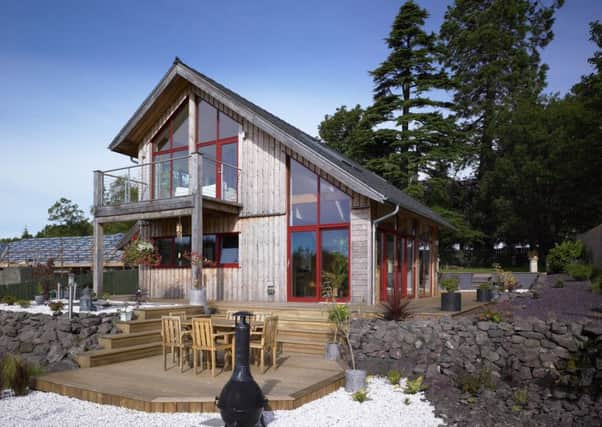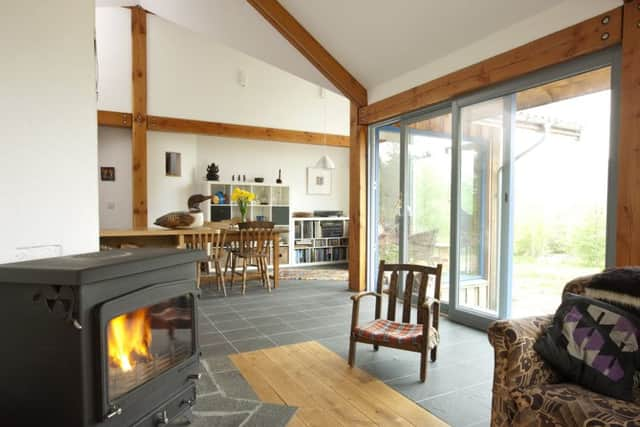Scotland plans for new wave of Scandi-style wooden homes


Housing and forestry experts are due to meet in Edinburgh next week for a major conference that will look at using more home-grown timber to house the nation’s population.
The Scottish Government set out a target earlier this year plant up to 26.5m more trees by 2021 with the figure to rise to 33m by 2025.
Advertisement
Hide AdAdvertisement
Hide Ad

It is hoped to fundamentally reverse the deforestation of the country, which has become the third biggest net importer of timber in the world after China and Japan.
With more trees available, a bold target to increase the use of native timber in the Scottish construction industry has also been set.
Architect Neil Sutherland, of MAKAR Construction near Inverness, is among speakers at the From Trees to Timber Homes conference at the Royal Society of Edinburgh on September 27.


He said: “The whole future of housing really has to be different from the way we are doing things just now.
“Most of the northern hemisphere has a timber house tradition, from Canada and the Unitied States to Scandinavia and through the middle of Europe, through Germany and France.
“The things that make up a house, the structural fabric - the walls and the roof - and the extra finishes such as the cladding and decking - these can all be sourced in Scotland.
“But at the moment we import around 80 per cent of the materials that we use.
“We need to reverse the trend and make a much better use of the resource and realise that Scotland is one of the best places to grow trees, even better than Scandinavia.”
Advertisement
Hide AdAdvertisement
Hide AdTree cover extends to only around 18 per cent of Scotland at present compared to a European average of 35 per cent.
Four species of timber dominate Scotland’s commercial forest - pines, spruce, larch and fir - Mr Sutherland said.
He added: “We can use all of these in a complimentary way, from spruce for the structure to larch for the external finishes.
“Scotland is really well placed. In Scandinavia, there are two species - pine and Norway spruce. They are jealous of our forestry culture.”
Timber is regarded for its insulating properties and its low environmental impact given the trees absorb CO2 as they grow and keep carbon locked in until it is burned or starts to decompose.
Mr Sutherland said there was a network of small companies in Scotland building timber-rich housing in workshops.
The technology is becoming increasingly sophisticated and the manufacturing environment suited to the Scottish weather, he added.
He added: “We’re in the timber age of house construction. Methods are getting more sophisticated. Most of the things that service our lives, such as washing machines, are made in workshops as we want quality and we want things that work.
“So the future of housing will also be in the workshop.
Advertisement
Hide AdAdvertisement
Hide Ad“Timber lends itself to this sort of approach as it is a dry environment.
“You are putting the house on a back of a lorry and assembling a three-bedroom house on site in three days.”
He said the average life span of a timber-built house was around 200 years with work continuing to drive down the cost of manufacturing.
Stuart Goodall chief executive of Confor, the Edinburgh-based Confederation of Forest Industries, said the process to get permission to plant commercial forestry, needed to speed up.
Grant support of £4,500 per hectare available to those planting woodland, he added.
“We are working with Fergus Ewing and the Scottish Government to speed up the process but that can still take a very long time and it does put people off.
“If you want to built a house you can get permission in two or three months. IF you want to plant an area of forestry it can take two to three years.
“If the system is right, planting woodland is a very attractive thing to do.”
Advertisement
Hide AdAdvertisement
Hide AdWhile research into growing trees more quickly continues, it still takes 30 to 40 years for woodland to mature at present.
“There are plenty of people who are prepared to think on this timescale,” Mr Goodall added.